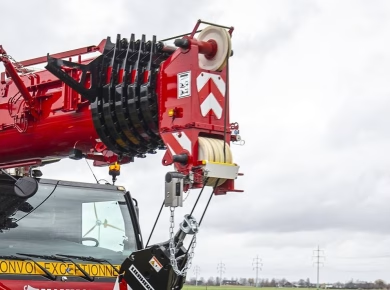Navigating the multifamily housing sector can feel like walking a tightrope—one misstep and you could end up in tenant hell instead of cash flow heaven. As someone who has traversed this landscape, I’ve encountered both the exhilarating highs of passive income and the daunting lows of tenant management. While the allure of steady cash flow from multifamily homes is undeniable, the reality often requires a nuanced understanding of tenant relationships, maintenance challenges, and market dynamics.
Understanding the Cash Flow Potential
Investing in multifamily properties is often touted as one of the most stable paths to wealth creation in real estate. The potential for consistent cash flow is a significant draw, especially when compared to single-family homes. With multiple units under one roof, there’s a built-in buffer: if one tenant moves out, the remaining units can still cover your mortgage and other expenses.
Real-World Example
Take a property I managed a few years back, a four-plex in a growing suburb. When one tenant left unexpectedly, I was initially anxious about the vacancy. However, thanks to the other three units being occupied, I managed to keep the cash flow positive while marketing for a new tenant. This experience reaffirmed the importance of having a diverse tenant base—something that single-family homes simply can’t match.
The Dangers of Tenant Management
However, it would be naive to ignore the potential pitfalls of managing multiple tenants. The complexity of tenant relationships can sometimes feel like a never-ending saga. Issues can range from late rent payments to disputes between tenants, and while these challenges are manageable, they require diligence and a proactive approach.
Resolving Tenant Disputes
A particularly memorable incident involved two tenants in a duplex who couldn’t seem to coexist peacefully. Noise complaints escalated to personal confrontations, forcing me to step in. Open communication and mediation were key in resolving their differences. In scenarios like these, having a solid lease agreement that outlines expectations and consequences can be a lifesaver.
Maintenance Challenges
When dealing with multifamily homes, maintenance is another area that can turn cash flow dreams into nightmares. With more units comes more wear and tear, and consequently, a greater demand for upkeep.
Budgeting for Maintenance
I learned early on that allocating a portion of rental income to a maintenance fund is essential. A good rule of thumb is to set aside 1% of the property value annually for maintenance. For example, if you own a $300,000 property, budgeting $3,000 for repairs and unexpected issues can help ensure you’re not caught off guard. Regular inspections also allow property owners to catch minor issues before they escalate into costly repairs.
Market Dynamics and Location Considerations
Understanding local market dynamics is crucial when investing in multifamily homes. Different neighborhoods have varying demands and rental rates, and what works in one area may not apply to another.
Conducting Thorough Research
Before investing, conduct thorough research on the neighborhood’s demographics, employment rates, and future development plans. I invested in a property near a new tech hub, anticipating that an influx of young professionals would drive rental demand. This foresight paid off, as rental rates soared after the tech companies moved in.
Leveraging Technology for Property Management
In today’s fast-paced world, leveraging technology can make the property management process smoother and more efficient. From tenant screening to maintenance requests, technology can enhance your management strategy and save time.
Property Management Software
Using property management software has transformed how I handle day-to-day operations. Software like Buildium or AppFolio streamlines processes, allowing for easy rent collection, tenant communications, and maintenance tracking. This not only improves efficiency but also enhances tenant satisfaction—a crucial factor for long-term success.
Building Relationships with Tenants
One of the most overlooked aspects of multifamily investment is the importance of building strong relationships with tenants. Happy tenants are more likely to renew leases and take better care of the property.
Creating a Community Atmosphere
In my properties, I’ve found success in creating a sense of community. Organizing occasional tenant meet-and-greets or simple appreciation events can foster goodwill and reduce turnover. A small gesture, like providing holiday treats, can go a long way in making tenants feel valued.
Conclusion: Finding Balance in Multifamily Investments
Investing in multifamily homes is undoubtedly a lucrative venture, but it requires a balanced approach to navigate the complexities of tenant management, maintenance, and market dynamics. By understanding the potential cash flow benefits and being aware of the challenges, you can position yourself for success in this competitive sector.
As you embark on or continue your multifamily investment journey, remember that building relationships, leveraging technology, and maintaining a proactive mindset are key to turning what can sometimes feel like tenant hell into a true cash flow goldmine. Each challenge faced is a learning opportunity and, ultimately, a stepping stone to greater financial freedom.



